 New proposed regulations for the red snapper fishery have conservationists celebrating and fishermen marching on Washington, DC in protest. Quota reductions are some of the most extreme and far-reaching I’ve ever come across. A huge area of the ocean (over 10,000 square miles) has been targeted for closure of not just the red snapper fishery… but all “bottom fishing” of the 73 species in the snapper-grouper management complex. According to the South Atlantic Fisheries Management Council, such severe regulations are necessary because of the degree of overfishing that has been occurring (8 times the sustainable level since 1970). As a result of this overfishing, the stock is also considered to be seriously overfished- the National Marine Fisheries Service estimates that current stocks are 3% of target size. A total area closure is necessary, according to the SAFMC, because even accidental bycatch of red snapper while trying to catch other snapper-grouper complex fishes can seriously impact such a reduced population. Since these fish live in relatively deep water, they often die after being released. Finally, an 87% reduction in red snapper mortality needs to occur over many years (possibly decades) to rebuild stocks. These regulations are in place right now via a process called “the interim rule”, and meetings will take place later this year to determine if they should remain in place.
New proposed regulations for the red snapper fishery have conservationists celebrating and fishermen marching on Washington, DC in protest. Quota reductions are some of the most extreme and far-reaching I’ve ever come across. A huge area of the ocean (over 10,000 square miles) has been targeted for closure of not just the red snapper fishery… but all “bottom fishing” of the 73 species in the snapper-grouper management complex. According to the South Atlantic Fisheries Management Council, such severe regulations are necessary because of the degree of overfishing that has been occurring (8 times the sustainable level since 1970). As a result of this overfishing, the stock is also considered to be seriously overfished- the National Marine Fisheries Service estimates that current stocks are 3% of target size. A total area closure is necessary, according to the SAFMC, because even accidental bycatch of red snapper while trying to catch other snapper-grouper complex fishes can seriously impact such a reduced population. Since these fish live in relatively deep water, they often die after being released. Finally, an 87% reduction in red snapper mortality needs to occur over many years (possibly decades) to rebuild stocks. These regulations are in place right now via a process called “the interim rule”, and meetings will take place later this year to determine if they should remain in place.
Because of the controversy surrounding this topic, SAFMC science personnel were unable to be interviewed. However, . Zack Bowen, a charter boat operator from Savannah, Georgia, and Blaine Dickenson, a recreational fishermen and SAFMC advisor, agreed to participate.
WhySharksMatter (WSM): The scientific research I’ve seen shows that red snapper populations have declined enormously and are now a small fraction of their historical population size. Do you agree or disagree with this research?
Blaine Dickenson (BD): Disagree. Red snapper commercial catch data from the 1950’s, 1960’s, and some of the 1970’s is anecdotal and incomplete. There was no reasonable, useful data from the 1950’s and 1960’s! Recreational catch data collection methods are not acceptable and involve guesswork and overestimations. The anecdotal evidence presented by thousands of recreational fishermen (once they heard of the impending closures) indicates that there are a lot of red snapper out there in the Atlantic. If the SAFMC can use anecdotal evidence, why can’t we? From my personal experience, I also disagree with the release mortality data. The 2010 red snapper benchmark study is a step forward and the sceintists involved will take another look and hopefully not be afraid to say that they were wrong. It happened in the Gulf (although they didn’t admit they were wrong). Red snapper “miraculously recovered in 2-3 years. If the data is not good, don’t use it. Find a reliable way to improve the data collection methods. If reliable science determines that red snapper levels are 3% of historical populations, then I would support reasonable closures, but the science is not acceptable. I will agree that the populations are probably not what they were in the 1950’s, but that is an unreasonable goal.
Zack Bowen (ZB): I KNOW that the regulations that were put in place in 1993 are working. (2 per person 20 inch min) The fishermen in Georgia could not find a red snapper in the late 1980s. In 1993, when the first “under-size” red snapper was released it began the rebuilding process for red snapper. Since then, the biomass has exploded and there are snapper everywhere. We are now catching red snapper in places that we never caught them before. At two per person and 20 inch min size the fishery is sustainable.
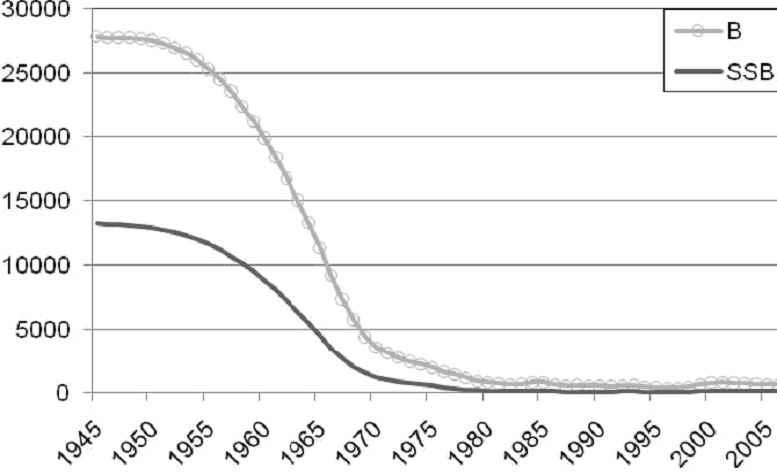
WSM: Do you agree that (in general), when a population of fish gets very low, drastic management measures are necessary to ensure the long term survival of that fish species?
BD: Absolutely. The preservation of a species far outweighs any recreational or commercial economic benefits. However, management must be based on sound science or the public will be suspicious and not support it. Also, there should not be any commercial fishing for any species considered “overfished” or “undergoing overfishing” in my opinion.
ZB: I do believe fishery management is a must but we have to have reliable and accurate information of the fishery to make the decisions necessary to manage them properly.
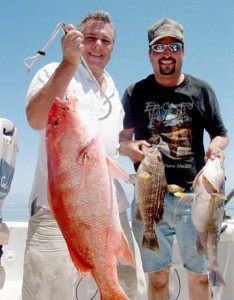
WSM: How much is the red snapper fishery worth? How many jobs would be affected by the closure?
BD: Thousands of jobs in both the recreational and commercial sectors will be lost. The recreational value of the fishery to the economy in Florida far outweighs the commercial value (which is concentrated in the hands of a few). The Magunson-Stevens Act requires NOAA to have socioeconomic data and take it into account, and they do not.
ZB: I dont know how much the red snapper fishery worth to any body but me. To me, It is worth everything. Until Jan. 4 2010, I had made my living with red snapper. My job is very much in danger because of the red snapper closure.
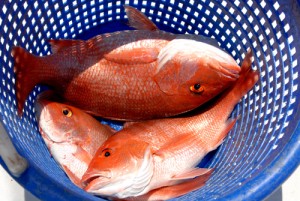
WSM: Fishermen seem to be more angry about the red snapper issue than about other fishery management issues. Would you agree with this, and if so, why is that the case?
BD: Yes, because on-the-water anecdotal evidence directly contradicts the science. Every recreational and commercial fishermen I have spoken to or read about indicates that red snapper are all over the place and that there are big older fish being caught as well. Most anglers do not trust the Federal government and this is the latest and biggest Federal closure in a long string of recent closures.
ZB: I feel that the fishermen are equally angry about any fishery management that uses less than accurate data to determine the outcome of the fishery. Again, we are seeing more and more red snapper on the reefs.
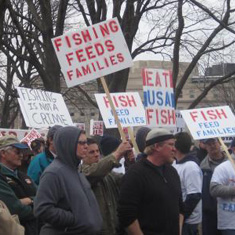
WSM: The reasoning I’ve seen for the total closure of bottom fishing is A) fishing for other species can still affect red snapper, B) Catch and release of red snapper still kills them, and C) We need to catch A LOT fewer red snapper. What do you think of this reasoning?
BD: I agree with A, especially if you are fishing an area or bottom structure known to hold red snapper. I have been hearing of anglers looking for grouper and cobia off Stuart, FL and they leave the wreck because they can’t get away from the red snapper. I believe the release mortality rates are not as high as SAFMC believes they are for recreational fishermen. Of course catch and release still kills fish.
ZB: Fishing for other species does NOT affect red snapper, Only when a red snapper is caught is when it is affected. But if you take care of the fish (venting and handling properly) the fish stands an excellent chance of surviving. Please remember, we are releasing a lot (Thousands a year) of under size fish. I have even caught red snapper twice in one day. I vent and handle every fish the same way. I want every red snapper released to survive.
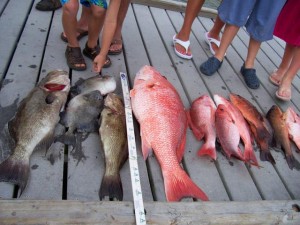
WSM: Many of my environmentalist friends have difficulty understanding why fishermen protest fisheries closures. Yes, fisheries closures mean less jobs now- but poor management will mean NO jobs in a few years. Please explain your side of this story to them.
BD: Recreational fishermen always ask the same question of commercials. Yes, you’ll make money now but nothing later. Some recreational and commercial fishermen will always complain for selfish, short term motives. I think long term as I have children and I want to pass my favorite pasttime and love of nature on to them. Some environmentalists will say “why would you not want to close this fishery when the species is overfished?” That’s a valid question, but it often ignores the agendas behind the closures as well as the poor science behind these closures.
ZB: We protest fisheries closure because of the flawed data that is used to close the fishery. Your environmentalist friends and others have quickly forgotten that the SAFMC has been managing the stocks for 30 years. They are the one in charge of the fisheries regulations, and for a stock to get in so bad of shape that it requires a total closure falls totally on there shoulders. Before 2010, the last regulations implemented were 1993. 17 years.17 years. Fisheries management is an ongoing process , I understand that but we go from 2 per per 20 inch min. to a total bottom closure from 98 to 300 feet . THATS CRAZY!!! There has to be compromise.
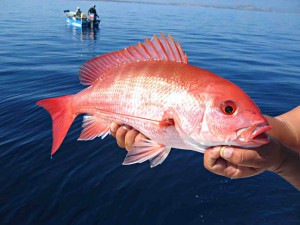
WSM: What do you think we should do about the red snapper fishery?
BD: Data collection methods need to be dramtically improved. Everyone involved needs to take a fresh, unbiased look in the 2010 benchmark assessment. SAFMC scientists should also start listening to those who have independently reviewed the science and start listening to those who spend their time on the water.
ZB: I think the 2 per person 20 inch min. is working and it still allows the fisherman to continue working. I would like to tell your readers to go to my company’s website and browse the red snapper pages and tell me if that looks like a fishery in a state of collapse? my company’s website is www.amicksdeepseafishing.com
~WhySharksMatter
These captains want the closure stopped because they dont know how to fish for anything else….they think making money is more important that the oceans future.
Comment removed (Rule 5)